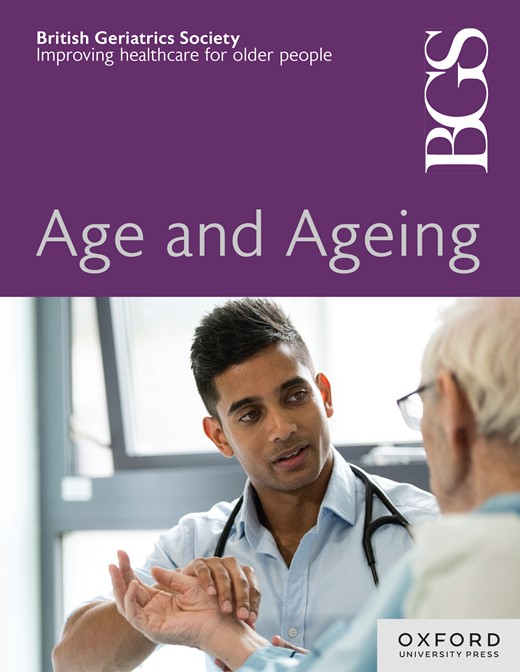老年妇女使用正式和非正式家庭护理的社会不平等:来自英国大型队列研究的证据。
IF 7.1
2区 医学
Q1 GERIATRICS & GERONTOLOGY
引用次数: 0
摘要
背景:在获得公共资助的社会护理的机会相对于需求受到限制的时候,资源最少、有护理需求的老年人可能不成比例地依赖于非正式护理。方法在2020- 2021年,来自英国百万妇女研究的66604名参与者被邀请完成一项在线调查,其中包括关于大流行前接受家庭护理的问题。调查结果与1998年招聘时收集的数据、2010年的一次重新调查以及2017-19年的住院情况相结合。我们使用多变量逻辑回归来评估教育水平和地区剥夺五分位数与正式或非正式护理使用之间的关系,并调整了倾向特征(年龄)、使能资源(家庭组成和规模)和护理需求(包括自评健康和合并症)。结果共44523名女性完成调查;43,756人符合分析条件(平均年龄75.6岁)。共有1407人(3.2%)接受非正式护理,544人(1.2%)接受正式护理,255人(0.6%)两者都接受。与那些有大学学位的人相比,那些没有资格证书的人更有可能接受非正式护理(OR: 1.50, 95% CI: 1.23-1.84),而更不可能接受正式护理(OR: 0.39, 95% CI: 0.25-0.60)。与最贫困的人相比,最贫困的人更有可能接受非正式护理(OR: 1.34, 95% CI: 1.09-1.65),并且在五分位数之间存在趋势(Ptrend = 0.02)。结论:这是英国最大的一项评估教育和贫困对社会护理使用差异的研究。我们发现,生活在贫困地区、受教育程度较低的老年妇女及其非正式照顾者在护理方面的不平等可能处于不利地位。本文章由计算机程序翻译,如有差异,请以英文原文为准。
Social inequalities in the use of formal and informal home care in older women: evidence from a large UK cohort study.
BACKGROUND
At a time when access to publicly funded social care is constrained relative to need, older people with care needs with the least resources may disproportionately rely on informal care.
METHODS
In 2020-21, 66,604 participants from the UK Million Women Study were invited to complete an online survey, which included questions on pre-pandemic receipt of home care. Responses were combined with data collected at recruitment in 1998, a 2010 re-survey, and hospital admissions in 2017-19. We used multivariable logistic regression to assess the association between education level and area deprivation quintile with formal or informal care use, with adjustment for pre-disposing characteristics (age), enabling resources (household composition and size) and care need (including self-rated health and co-morbidities).
RESULTS
A total of 44,523 women completed the survey; 43,756 were eligible for analysis (mean age 75.6). A total of 1407 (3.2%) received informal care, 544 received formal care (1.2%) and 255 (0.6%) received both. Compared to those with university degrees, those with no qualifications were more likely to receive informal care (OR: 1.50, 95% CI: 1.23-1.84) and less likely to receive formal care (OR: 0.39, 95% CI: 0.25-0.60). The most deprived were more likely to receive informal care (OR: 1.34, 95% CI: 1.09-1.65) compared to the least deprived, and there was a trend across quintiles (Ptrend = .02).
CONCLUSION
This is the largest UK study to assess variation in social care use by education and deprivation. We found inequities in care that may disadvantage older women in deprived areas and with lower levels of education, and their informal carers.
求助全文
通过发布文献求助,成功后即可免费获取论文全文。
去求助
来源期刊

Age and ageing
医学-老年医学
CiteScore
9.20
自引率
6.00%
发文量
796
审稿时长
4-8 weeks
期刊介绍:
Age and Ageing is an international journal publishing refereed original articles and commissioned reviews on geriatric medicine and gerontology. Its range includes research on ageing and clinical, epidemiological, and psychological aspects of later life.
 求助内容:
求助内容: 应助结果提醒方式:
应助结果提醒方式:


